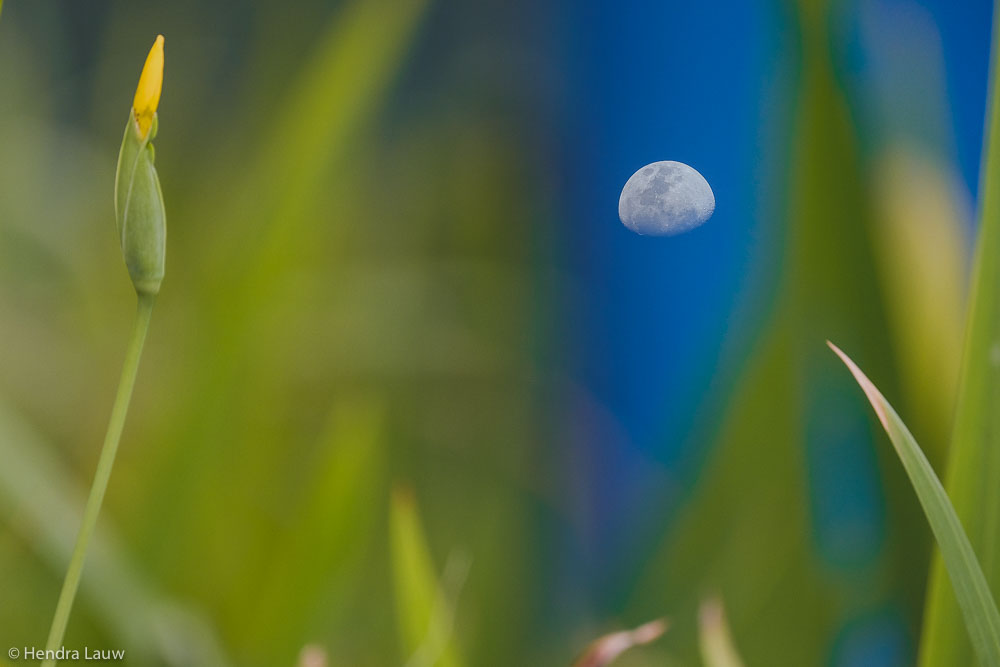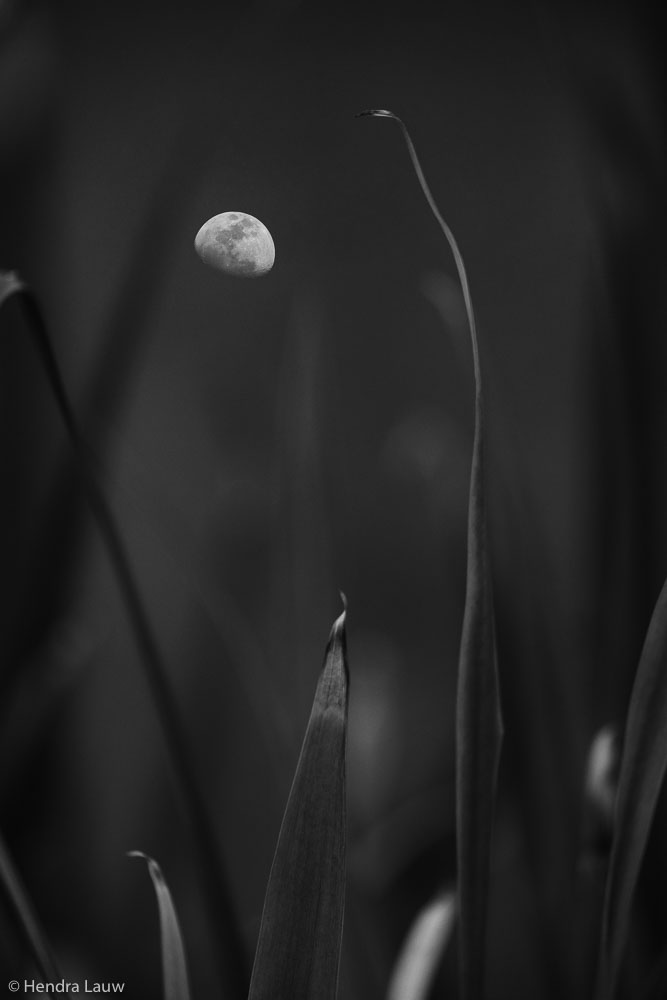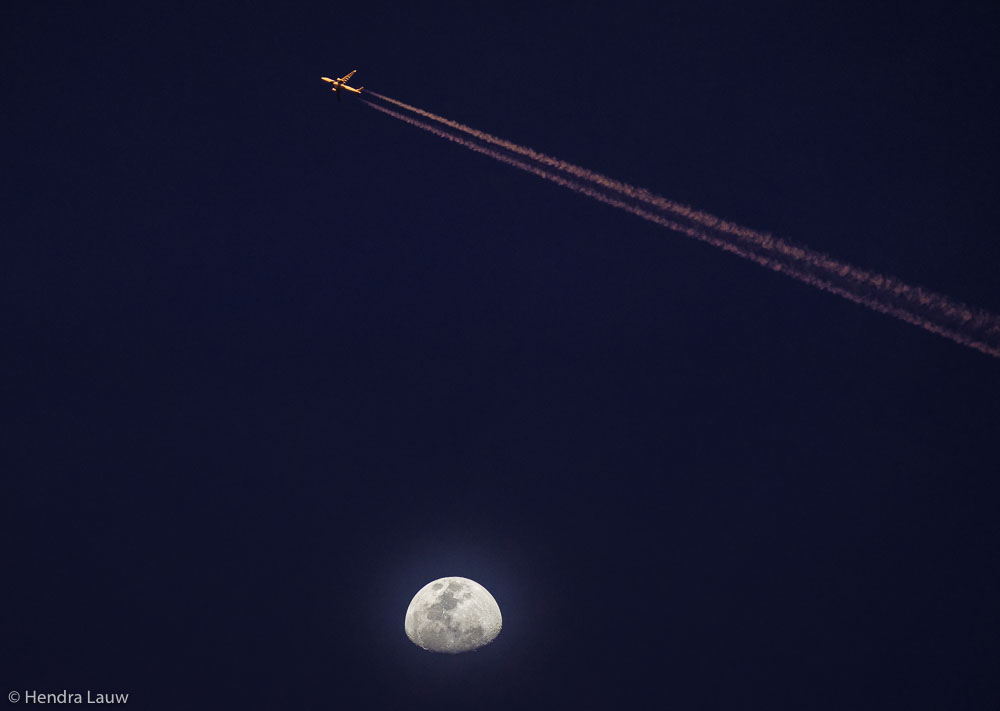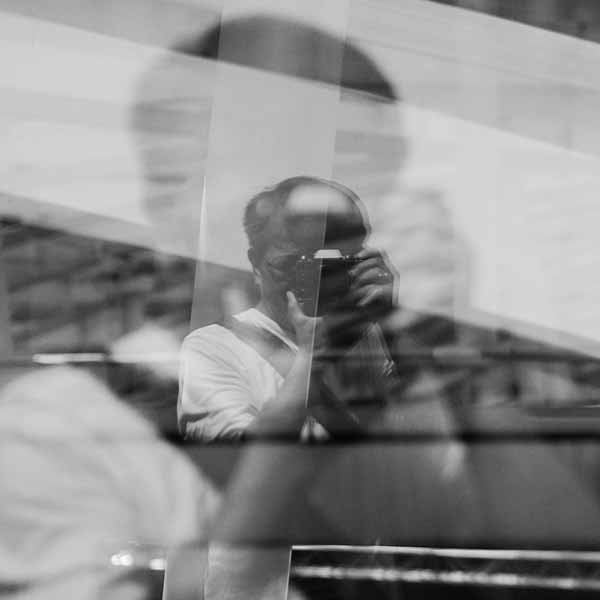Have you ever tried photographing moon? I love shooting moon. Moon, with textures, highlights and shadows on its surface, is such an artistic subject to photograph. I don’t have an uber long tele-lens, hence I always have to crop to have the moon appear larger on the final image. I used to shoot the moon with my Canon 70-200mm f/2.8L IS lens, which I’ve since sold (I’ll share more about that later). These days, I use the Fuji XF 55-200mm f/3.5-4.8 R LM OIS lens on my Fuji X-T2 body, giving me a 300mm focal length at the long end.
Yesterday evening, the sky over Singapore was clear and blue. The moon was on day 11 of its cycle, just four days shy of full moon. By 6pm, it had already risen, positioned about 40 degrees above the horizon. I grabbed my Fuji X-T2 with the 55-200mm lens and shot handheld with the lens’ image stabilizer enabled. To avoid a dull shot, I decided to add a foreground through a double exposure. While there wasn’t much around me to choose from, I noticed some plants that I thought would create a nice contrast for the composition.
I first shot the moon at f/8 underexposing it by 1 stop, then I shot the plants at f/4.8, the largest aperture I could get at 200mm for this lens, carefully placing the moon from the first shot amid the leaves. Quite pleased with the outcome, not so boring shots of the moon.

The second image below was converted to black and white. It has that mystery in it that I love.

And last but not least, two lucky shots of the day when aeroplanes flew and were in the frame.

The last one below was shot when the sky was already darker. A plane with its condensation trails, lit by the warm setting sun, flew into the frame.

Care to share in the comment box below, those images of the moon you have shot before? Thank you for stopping by.

Great article. How do you shoot double exposure in camera on the X-T2?
Hi Geoff,
On Fuji X-T2 or X-T1, turn the dial on the top left to one that has the sign of two overlapping rectangles.
Then you take the first shot, you will see on the screen or through the viewfinder that it will prompt you to take the next shot to overlap with the first shot.
You then take the second shot. If you are happy with it, just save it. Otherwise, you can retake the second shot. That’s it. Happy shooting. 🙂